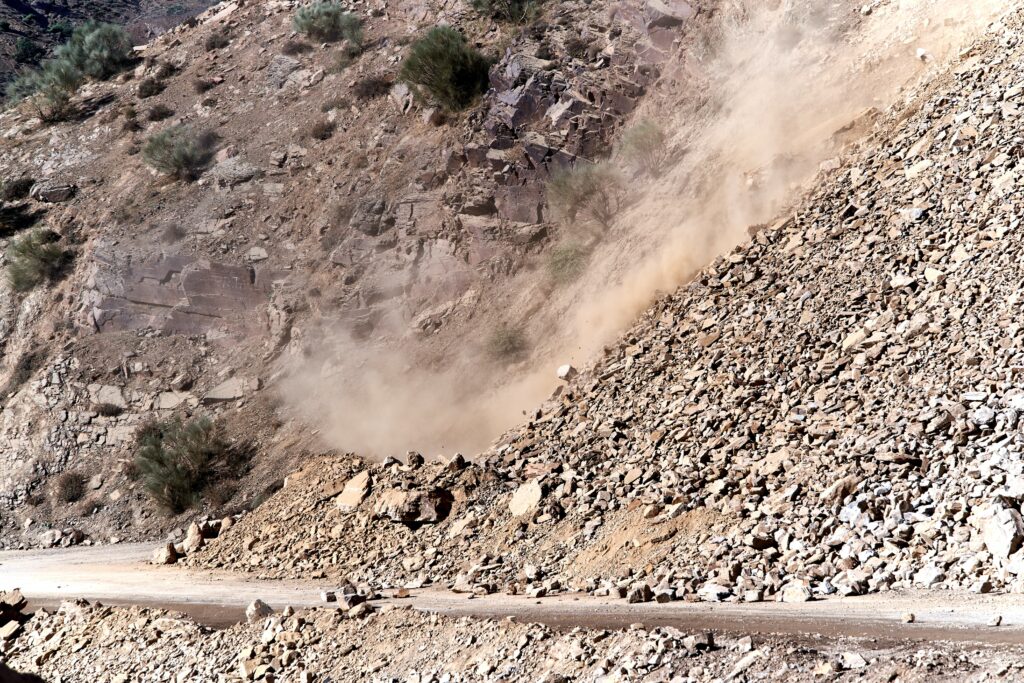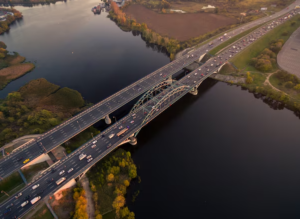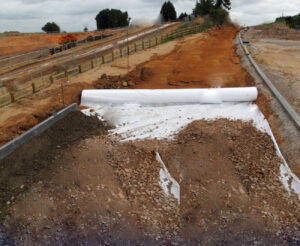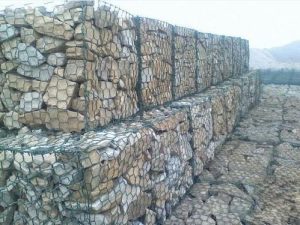The Ultimate Guide to Landslide Prevention: Tips and Techniques for a Secure Environment

Welcome to the ultimate guide on landslide prevention! Landslides can cause significant damage to property and pose a serious threat to lives. That’s why it’s crucial to understand the tips and techniques for creating a secure environment. In this comprehensive guide, we will delve into the various factors that contribute to landslides, such as geological conditions, rainfall patterns, and human activities. We will explore the warning signs and indicators that can help you identify potential landslide-prone areas. From there, we will discuss the preventive measures you can take to minimize the risk, including slope stabilization techniques, drainage systems, and vegetation control.
Additionally, we will provide valuable insights on emergency preparedness and response strategies to ensure the safety of yourself and your loved ones. Whether you’re a homeowner, a land developer, or simply someone interested in safeguarding the environment, this guide will equip you with the knowledge and tools necessary to create a secure and landslide-resistant environment. So let’s dive in and discover the ultimate strategies for landslide prevention!
Table of Contents
Understanding landslides: Causes and types
Landslides are natural hazards that occur when masses of rock, soil, or debris move down a slope under the influence of gravity. They can be triggered by various factors, including geological conditions, rainfall patterns, and human activities. Understanding the causes and types of landslides is crucial in preventing and mitigating their impacts.
Geological conditions play a significant role in landslide occurrence. Slopes with weak or unstable rocks, such as shale or sandstone, are more prone to landslides. Steep slopes are also at higher risk due to the increased gravitational forces acting on the materials. Additionally, the presence of faults or fractures in the underlying bedrock can weaken the stability of the slope.
Rainfall patterns can trigger landslides, especially in areas with high rainfall intensity or prolonged periods of heavy rain. Excessive water infiltrates the soil or rock layers, increasing pore pressure and reducing the strength of the materials. This leads to instability and potential landslide occurrence. Slopes that have experienced previous landslides are particularly susceptible to reactivating during rainfall events.
Human activities can significantly impact slope stability and increase the risk of landslides. Excavation, construction, and deforestation can alter the natural drainage patterns, remove vegetation that holds the soil together, or introduce additional weight on the slope. Improper grading, inadequate slope design, and poor maintenance of drainage systems can also contribute to landslides.
—
The importance of landslide prevention
Landslides can have devastating consequences, causing loss of life, damage to infrastructure, and environmental degradation. Therefore, it is essential to prioritize landslide prevention to safeguard lives and property. Preventive measures can significantly reduce the risk and potential impacts of landslides.
By implementing effective prevention strategies, individuals and communities can save lives and reduce the economic burden associated with landslides. Prevention not only reduces the likelihood of landslides but also helps maintain the stability of the natural environment. It preserves the integrity of ecosystems, protects water resources, and promotes sustainable land use practices.
Awareness and education about landslide risks and prevention methods are key to building resilience in landslide-prone areas. Public outreach programs, community engagement, and collaboration between government agencies, researchers, and stakeholders can ensure that prevention efforts are effective and sustainable.
—
Assessing landslide risks in your area
Before implementing preventive measures, it is crucial to assess the landslide risks in your area. Understanding the level of vulnerability and exposure to landslides will help you prioritize and tailor your prevention strategies accordingly.
One of the first steps in assessing landslide risks is to identify potential landslide-prone areas. Look for signs of previous landslides, such as scarps, tilted trees, or cracked pavement. Pay attention to areas with steep slopes, weak or unstable soils, or evidence of erosion. Consult geological maps or seek professional advice to gain a better understanding of the geological hazards in your area.
Additionally, consider the local rainfall patterns and drainage characteristics. Areas with high rainfall intensity, prolonged periods of rain, or poor drainage systems are more susceptible to landslides. Identify areas where water accumulates or flows rapidly during rainfall events, as these can indicate potential landslide hazards.
Engaging with local authorities, geological experts, or consulting engineering firms can provide valuable insights into the specific risks and vulnerabilities in your area. They can conduct detailed site assessments, geotechnical investigations, and provide recommendations for appropriate prevention measures.
—
Landslide prevention techniques: Engineering solutions
Engineering solutions are an effective way to prevent landslides and stabilize slopes. These techniques aim to improve the stability and integrity of the slope, reducing the risk of landslides. Here are some commonly used engineering solutions for landslide prevention:
1. **Slope stabilization:** Slope stabilization techniques involve adding structural elements to the slope to increase its stability. These can include retaining walls, rock bolts, soil nails, or ground anchors. These structures provide support and prevent the movement of soil or rock materials.
2. **Grading and terracing:** Grading involves modifying the slope’s shape and gradient to reduce the risk of landslides. This technique redistributes the mass of soil or rock, making the slope more stable. Terracing, on the other hand, creates flat or gently sloping areas on steep slopes, minimizing the potential for landslides.
3. **Drainage systems:** Proper drainage is crucial in preventing landslides. It helps control the amount and flow of water, reducing pore pressure and maintaining soil strength. Installing drainage channels, pipes, or culverts can effectively redirect water away from the slope, minimizing the risk of landslides.
4. **Soil reinforcement:** Soil reinforcement techniques involve adding materials to the slope to increase its strength and stability. These can include geotextiles, geogrids, or geocells. These materials provide additional support, preventing soil movement and potential landslides.
It is important to consult with geotechnical engineers or slope stability experts to determine the most appropriate engineering solutions for your specific situation. They can assess the site conditions, analyze slope stability, and design the most effective measures to prevent landslides.
—
Landslide prevention techniques: Natural solutions
In addition to engineering solutions, natural techniques can also be employed to prevent landslides and promote slope stability. These methods focus on enhancing the natural environment and ecosystem services to reduce the risk of landslides. Here are some natural solutions for landslide prevention:
1. **Vegetation control:** Vegetation plays a vital role in preventing landslides. Planting trees, shrubs, or grasses can help stabilize the soil, absorb excess water, and reduce erosion. The roots of vegetation bind the soil together, increasing its strength and preventing soil movement. Additionally, vegetation intercepts rainfall, reducing surface runoff and the potential for landslides.
2. **Mulching:** Mulch is a layer of organic or inorganic material applied to the soil surface. It helps retain moisture, prevent erosion, and stabilize the slope. Mulch can be made from straw, wood chips, or geotextiles. It reduces the impact of rainfall, preventing the soil from becoming saturated and reducing the risk of landslides.
3. **Bioengineering techniques:** Bioengineering techniques combine the use of plants and engineering principles to stabilize slopes. These techniques include techniques such as brush layering, soil bioengineering, or live crib walls. They utilize live plant materials and natural elements to reinforce the slope, providing long-term stability.
4. **Water management:** Proper water management is essential in preventing landslides. Implementing measures such as contouring, swales, or rain gardens can effectively manage water runoff and reduce the risk of slope instability. These techniques slow down the flow of water, allowing it to infiltrate the soil gradually.
When implementing natural solutions, it is important to consider the specific characteristics of your site, such as climate, soil type, and vegetation species. Consult with environmental experts or landscape architects to determine the most suitable natural techniques for your area.
—
Best practices for landscaping and land use to prevent landslides
Effective land use and landscaping practices are crucial in preventing landslides. Proper planning, design, and maintenance can significantly reduce the risk of slope instability. Here are some best practices for landscaping and land use to prevent landslides:
1. **Avoid slope alteration:** Minimize the alteration of natural slopes whenever possible. Altering slopes, such as cutting into hillsides or filling in depressions, can disrupt the natural drainage patterns and increase the risk of landslides. Preserve the natural topography as much as possible.
2. **Retain existing vegetation:** Preserve and protect existing vegetation on slopes. Trees, shrubs, and grasses help anchor the soil, absorb excess water, and reduce erosion. Avoid removing vegetation unless necessary, and replant if necessary.
3. **Limit impervious surfaces:** Minimize the use of impervious surfaces, such as concrete or asphalt, on slopes. These surfaces prevent water from infiltrating the soil, increasing runoff and the potential for landslides. Use permeable materials or incorporate green spaces to promote water absorption.
4. **Proper drainage design:** Incorporate proper drainage design in landscaping plans. Ensure that water is directed away from slopes and is properly channeled. Install drainage systems, such as gutters, downspouts, and French drains, to prevent water accumulation on slopes.
5. **Erosion control measures:** Implement erosion control measures, such as retaining walls or erosion control blankets, to prevent soil erosion. These measures help stabilize the slope, reduce sediment runoff, and minimize the risk of landslides.
6. **Regular maintenance:** Regularly inspect and maintain slopes and drainage systems. Clear debris, remove sediment buildup, and ensure that drainage channels are free from obstructions. Promptly address any issues or signs of instability to prevent further damage.
By following these best practices, you can create a landscaped environment that is more resilient to landslides. Consult with landscape architects or land use planners to develop appropriate landscaping and land use plans.
—
Early warning systems and monitoring for landslides
Early warning systems and monitoring play a crucial role in landslide prevention. They provide timely information and alerts, allowing individuals and communities to take necessary actions to mitigate the impacts of landslides. Here are some key components of early warning systems and monitoring:
1. **Geotechnical monitoring:** Geotechnical monitoring involves the use of instruments and sensors to measure slope stability and detect any changes in ground conditions. These instruments can include inclinometers, piezometers, or ground-penetrating radar. Continuous monitoring helps identify potential landslide triggers and provides early warning signs.
2. **Rainfall monitoring:** Monitoring rainfall patterns is essential in landslide-prone areas. Rainfall intensity, duration, and cumulative rainfall can all contribute to landslide susceptibility. Install rain gauges or access local weather data to monitor rainfall and identify potential landslide triggers.
3. **Remote sensing and satellite imagery:** Remote sensing techniques, such as satellite imagery or LiDAR, can provide valuable information about slope conditions and changes over time. These technologies can detect ground movements, changes in vegetation cover, or surface deformation, indicating potential landslide hazards.
4. **Community-based monitoring:** Engaging the local community in monitoring efforts can enhance early warning systems. Community members can provide valuable observations of ground conditions, signs of slope instability, or changes in water levels. Establishing communication channels and sharing information can improve response and preparedness.
5. **Emergency alert systems:** Implementing effective emergency alert systems ensures that timely warnings reach individuals and communities at risk. Utilize various communication channels, such as text messages, sirens, or social media, to disseminate alerts and evacuation orders.
It is important to have a comprehensive understanding of the local conditions and consult with experts in implementing early warning systems and monitoring. Collaborate with local authorities, geotechnical engineers, or disaster management agencies to develop and implement an effective system.
—
Emergency preparedness for landslides
Despite preventive measures, landslides can still occur. Being prepared and knowing how to respond during a landslide event is crucial for minimizing the risks and ensuring the safety of yourself and your loved ones. Here are some key strategies for emergency preparedness:
1. **Develop an emergency plan:** Create an emergency plan that outlines the necessary actions to take during a landslide event. Identify evacuation routes, safe shelters, and communication methods. Ensure that all family members are aware of the plan and practice emergency drills regularly.
2. **Assemble an emergency kit:** Prepare an emergency kit that includes essential supplies, such as food, water, medication, flashlights, and a first aid kit. Keep the kit easily accessible and regularly check and replenish the supplies.
3. **Stay informed:** Stay updated on weather conditions, landslide warnings, and evacuation orders. Listen to local news, radios, or access official websites for the latest information. Follow the instructions of local authorities and evacuate immediately if instructed to do so.
4. **Monitor the surroundings:** Be vigilant and watch for any signs of landslides, such as ground cracks, tilting trees, or sudden changes in water flow. If you notice any warning signs, evacuate the area immediately and seek higher ground.
5. **Ensure structural safety:** Regularly inspect your property for any signs of structural damage or instability. Reinforce weak areas, repair cracks, and secure loose objects that can become projectiles during a landslide event.
6. **Maintain communication:** Establish a communication plan with family members, neighbors, and emergency contacts. Determine a designated meeting point and ensure that everyone knows how to reach each other in case of separation.
By being prepared and taking necessary precautions, you can minimize the risks and protect yourself and your loved ones during a landslide event. Stay informed, stay alert, and prioritize safety above all.
—
Resources and organizations for landslide prevention and mitigation
When it comes to landslide prevention and mitigation, various resources and organizations provide valuable information, guidance, and support. Here are some key resources and organizations you can turn to:
1. **United States Geological Survey (USGS):** The USGS offers comprehensive information on landslide hazards, monitoring techniques, and mitigation strategies. Their website provides educational resources, maps, and reports on landslides.
2. **International Consortium on Landslides (ICL):** The ICL is a global network of experts and organizations dedicated to landslide research, prevention, and mitigation. They organize conferences, publish scientific journals, and provide resources on landslide-related topics.
3. **Federal Emergency Management Agency (FEMA):** FEMA offers resources and guidance on landslide risk assessment, emergency planning, and recovery.



